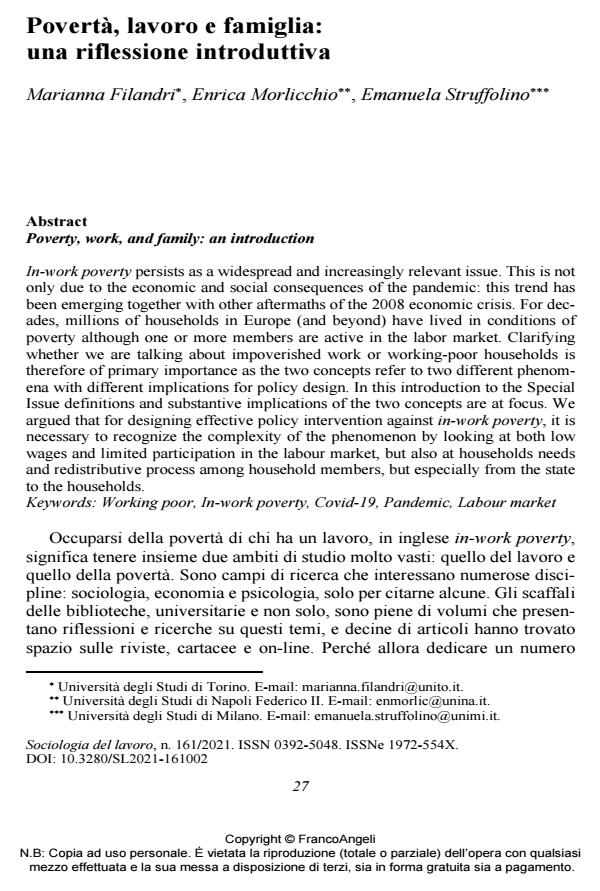Poverty, work, and family: an introduction
Journal title SOCIOLOGIA DEL LAVORO
Author/s Marianna Filandri, Enrica Morlicchio, Emanuela Struffolino
Publishing Year 2021 Issue 2021/161
Language Italian Pages 7 P. 27-33 File size 165 KB
DOI 10.3280/SL2021-161002
DOI is like a bar code for intellectual property: to have more infomation
click here
Below, you can see the article first page
If you want to buy this article in PDF format, you can do it, following the instructions to buy download credits

FrancoAngeli is member of Publishers International Linking Association, Inc (PILA), a not-for-profit association which run the CrossRef service enabling links to and from online scholarly content.
In-work poverty persists as a widespread and increasingly relevant issue. This is not only due to the economic and social consequences of the pandemic: this trend has been emerging together with other aftermaths of the 2008 economic crisis. For decades, millions of households in Europe (and beyond) have lived in conditions of poverty although one or more members are active in the labor market. Clarify-ing whether we are talking about impoverished work or working-poor households is therefore of primary importance as the two concepts refer to two different phe-nomena with different implications for policy design. In this introduction to the Special Issue definitions and substantive implications of the two concepts are at focus. We argued that for designing effective policy intervention against in-work poverty, it is necessary to recognize the complexity of the phenomenon by looking at both low wages and limited participation in the labour market, but also at households needs and redistributive process among household members, but espe-cially from the state to the households.
Keywords: Working poor, In-work poverty, Covid-19, Pandemic, Labour market
- Introduzione Silvana Salerno, Valeria Quaglia, in WELFARE E ERGONOMIA 1/2022 pp.31
DOI: 10.3280/WE2022-001004
Marianna Filandri, Enrica Morlicchio, Emanuela Struffolino, Povertà, lavoro e famiglia: una riflessione introduttiva in "SOCIOLOGIA DEL LAVORO " 161/2021, pp 27-33, DOI: 10.3280/SL2021-161002